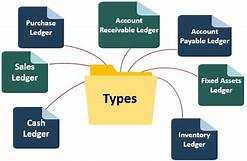Classification of ledger accounts
When entering the business transaction into five types of accounts becomes the classification of accounts is as follows. And some accounts of these are balance sheet accounts and income statement accounts.
- Assets
- Liability
- Revenue
- Expenses account
- Equity account.
- Withdrawal’s account
Accounting categories and their role
Asset Account
Assets are things the business owns and divide into tangible and intangible assets. Tangible assets are the following. All the companies’ assets such as land & building, machinery equipment, cash, inventories, and debtors are kept and monitored.
The intangible assets could be goodwill, copyright, patent rights. Each account is maintained separately to see the increase and decrease in the reports.
The business maintains a separate ledger account for each tangible and intangible asset to record any increase or decrease in that asset.
Liability account
It refers to the company’s liability in a specified period, but it could be long-term or short-term. The penalties could be a mortgage, loans from lenders, accruals within an accounting period, including accounts payable, and debts owed to outsiders. The liability means payable; the examples are rent payable, wages payable, bills payable, loans payable, and interest payable. Any income received in advance is also a liability, which means you received an income during a financial period. Still, that income belonging to the following financial period is called accrued income. Also, you have not given the related services to the client who paid you the money in advance.
Revenue
Revenue is the inflow of cash for the services you provide or for the sales of goods. Besides, it refers to the income received during a stipulated accounting period and items like prepayments made by your business and accounts receivable. It also refers to the net profit, which you calculate at the end of a financial period after deducting all the expenses incurred during the same period. The inflow of cash in the business could come from areas other than revenue-generating activities of the business. Like dividends from another company, rewards will be considered dividend income rather than compensation revue, rental income, interest, and commission income. It is usual for businesses to maintain the revenue income separately and all income earned.
Expenses account
Any resource or services expended to generate income is known as the expense. All the costs incurred for daily production, salary, marketing, and all the purchases for the business.
Capital and Equity account
Equity means the owner’s interest in the business, and it is the amount leftover after taking the assets minus liabilities. The balance in the capital account increases with the introduction of new capital.
In a sole proprietorship, the capital account has the owner’s capital used in the business. In a partnership, each partner will have a separate capital account. In large companies, there will be stockholders and shareholders; the capital stock account is there to maintain the changes in the capital.
Withdrawal’s account
Any business maintains this account to show the cash or any asset taken from the company by the business owner for personal use, so it comes underdrawings accounts. In partnerships, also when it happens, it goes into drawings account. Withdrawals are more systematic and usually termed as distributions to stockholders in a large business. The account used for recording such distributions is known as a dividend account.


